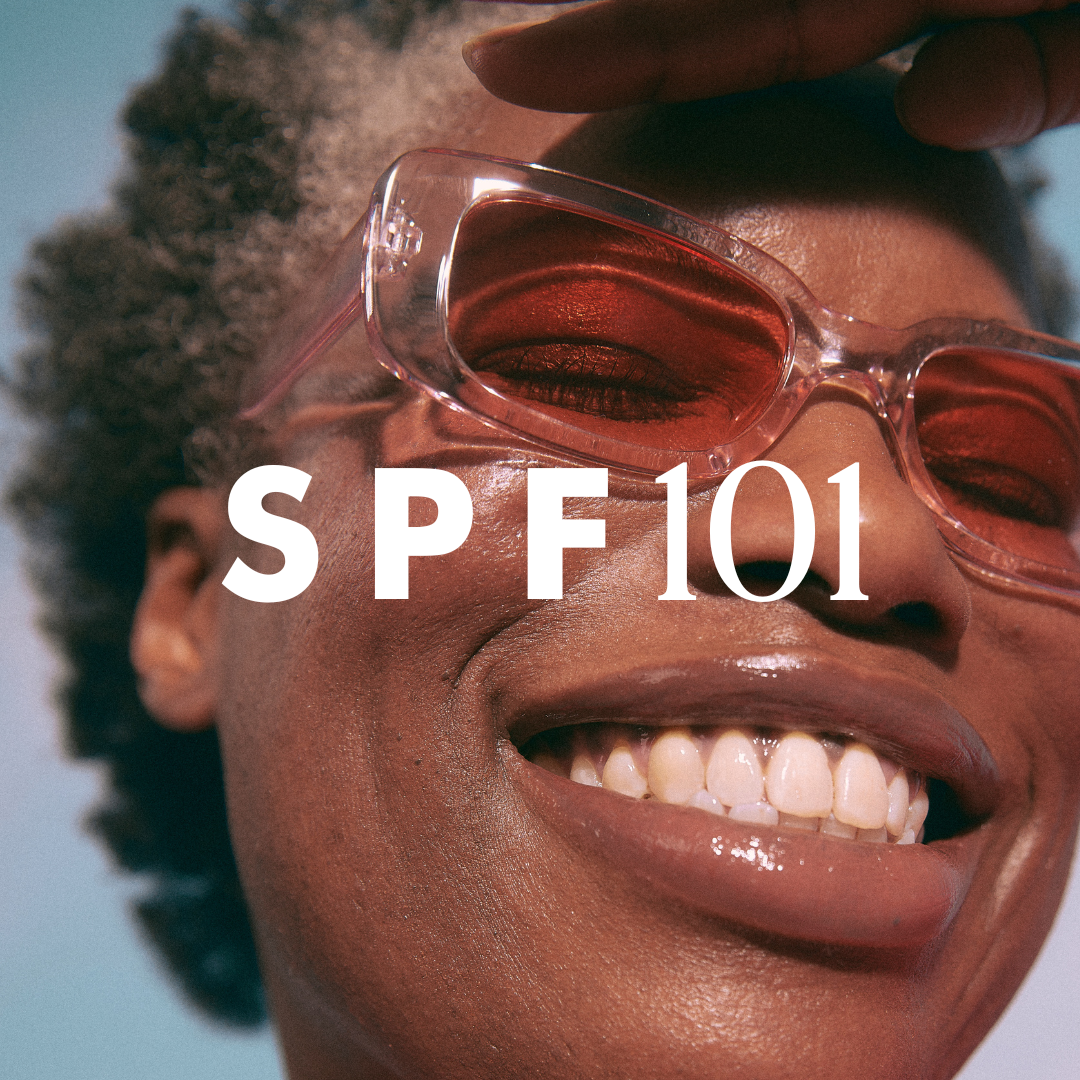
We’re all familiar with those three letters: SPF (sun protection factor). But the world of suncare has more letters and numbers than you may be able to keep track of… We’ve put together a little cheat sheet that should help you understand a little bit more, a starting off point if you will! Let’s jump in shall we?
UVA: think A for ageing, but what it really stands for is ultraviolet A. These penetrate deep into the lower layers of the skin (Dermis). These are the rays that cause skin-ageing (way earlier than it needs to!) with wrinkling and age spots. Their intensity remains pretty stable all year round and they can penetrate through glass, remember that next time you’re looking out the car window listening to a sad song…
UVB: think B for burning, but what it really stands for is ultraviolet B. These penetrate the upper layers of the skin (Epidermis) and cause skin cancer (melanoma), skin reddening, burning, tanning and ageing. The intensity of these rays is dependent on the season, time of day and location. They can also reflect off of surfaces like snow, ice and sand which can increase your exposure to the rays. Yeah, skiing is not an effective way to avoid a sunburn!
Blue Light: this is what comes off your phone, laptop, TV, if it’s got a screen it’s probably emitting blue light. It can cause inflammation, collagen breakdown, hyperpigmentation and free radical damage.
SPF Number: Bare with us here! This is how much longer you can stay in the sun before you start experiencing any sun overexposure (like burning) on your skin. So if you can go 10 minutes in the sun before you start to see or feel anything, you multiply 10 minutes by the SPF Factor and that gives you the number of minutes you will be protected. However, as a rule of thumb, we suggest topping up every two hours!
Broad Spectrum: If the sunscreen is broad spectrum, that means it is protecting you from both UVA and UVB.
Synthetic Sunscreen: This sunscreen is absorbed into the skin and converts the UV rays into heat. The consistency is thinner than mineral sunscreens making it ideal for everyday use and can also easily be mixed with other skincare ingredients to make your sunscreen even better!
Mineral Sunscreen: Also known as physical sunscreen as it sits on top of your skin like a shield and reflects UVA and UVB rays off of your skin. There’s no waiting around time, when it’s on, it’s working. Mineral sunscreen is however prone to wearing off easily, so make sure you are reapplying often! Speaking of re-applying…
2 hours: Though everyone’s natural sun protection time is different, it is always a good idea to top up every two hours, better safe than sorry!
2 fingers: This is the amount of sunscreen you should be putting on your face. Don’t forget to take it up to your ears and down your neck as well!
Shot Glass: Not just for a good time, a shot glass is the amount of sunscreen you should be using to cover your whole body.
10AM to 4PM: This is the time of day when rays are the strongest, so even with your Hello Sunday SPF on, it may be wise to try to limit your direct sun exposure.
Expiry Dates: Over time, the active ingredients in your sunscreen become less effective, so be sure to keep an eye on the expiry to make sure you’re not being left to burn!
PAO: This is the period after opening and the number inside it is the number of months you can use the product for before it will no longer keep its promises. So be sure to check this before you tuck into a sunscreen in your cupboard!
Water and Sweat Resistant: Although waterproof sunscreen sounds like a dream, there is no way to make a sunscreen 100% waterproof so water and sweat resistant formulas are developed to ensure that more of the sunscreen stays on your body and less washes off into the water. With that being said, don’t forget to reapply after a dip or a sweaty run!
